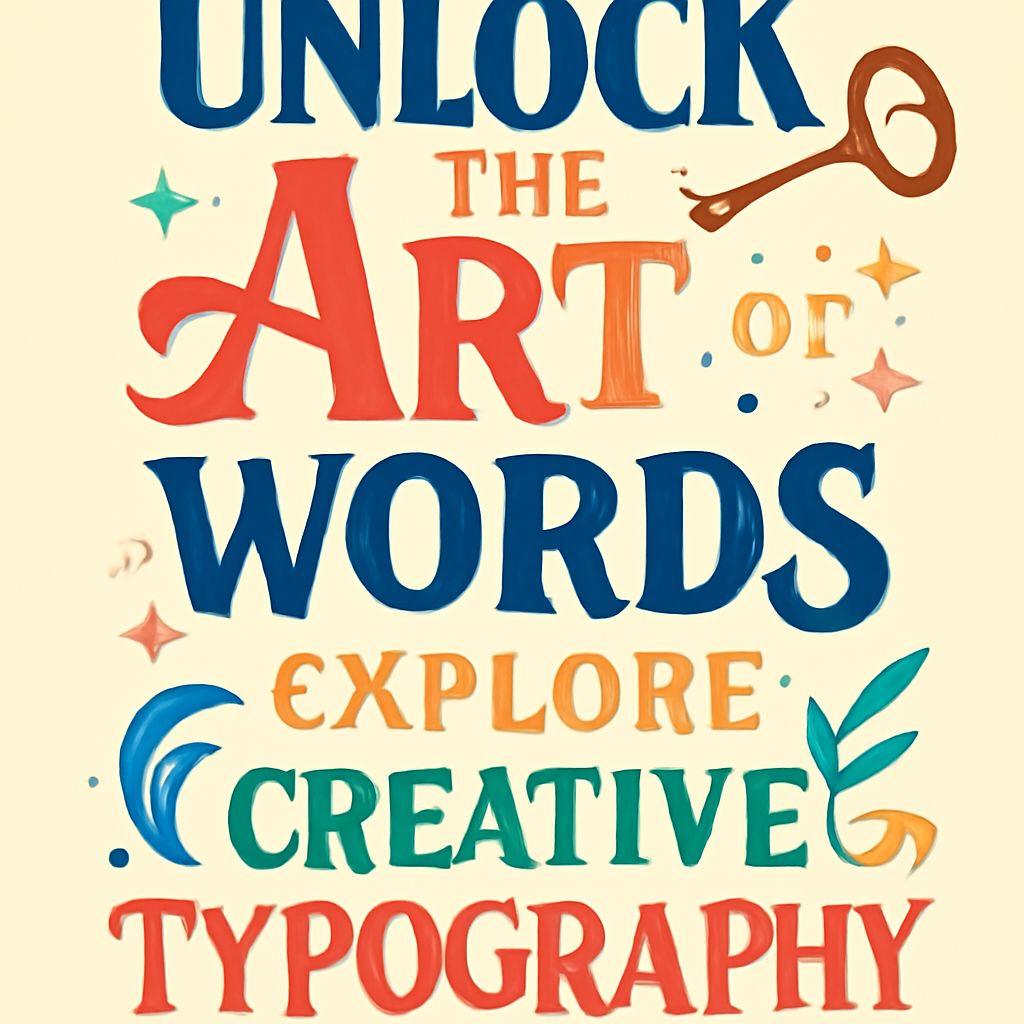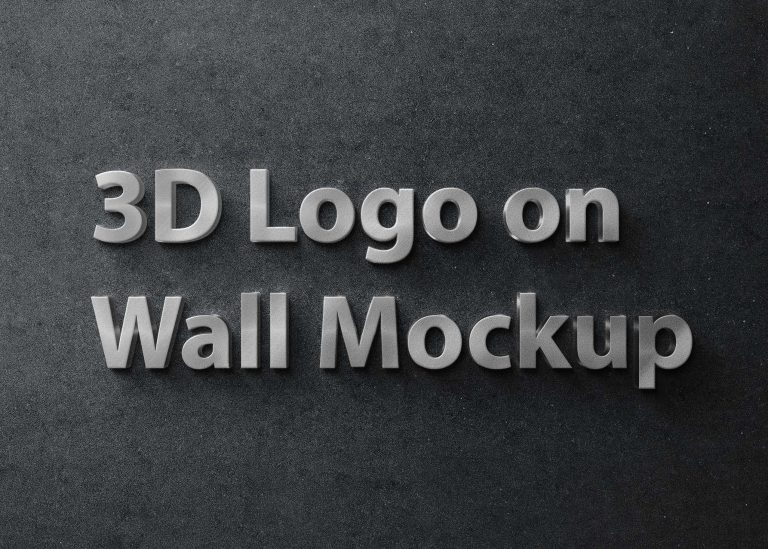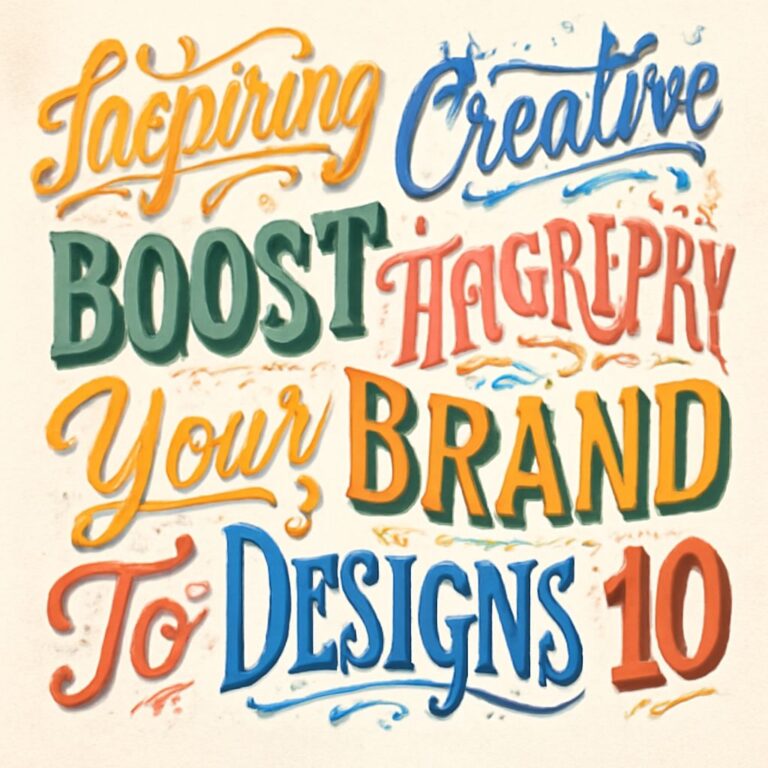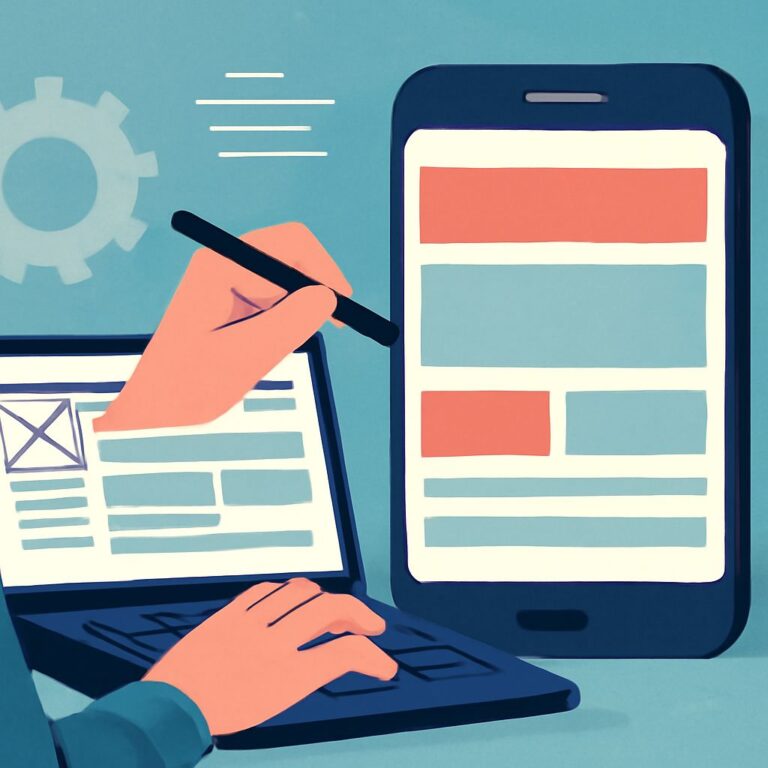Table of Contents
Introduction
Typography is more than just choosing fonts; it is the art and technique of arranging type to make written language not only readable but also visually appealing. Creative typography brings life to words and plays a crucial role in design, impacting emotions and conveying messages effectively.
The History of Typography
The journey of typography dates back to the advent of writing systems. It evolved significantly during the invention of movable type by Johannes Gutenberg, which revolutionized printing and disseminated knowledge widely.
- Early scripts like cuneiform and hieroglyphs laid the foundation for writing.
- Gutenberg’s press in the 15th century popularized typefaces.
- The digital era introduced web fonts, enhancing online textual display.
The Impact of Typography in Design
Typography influences how people perceive information. Well-crafted typography can guide readers through content seamlessly, ensuring clarity and engagement.
- Establishes brand identity and tone.
- Controls the flow and emphasis of content.
- Enhances readability and aesthetic appeal.
Popular Typography Styles
Understanding various typography styles helps designers select the right typeface to match their project’s tone:
- Serif: Traditional and formal, often used in print.
- Sans Serif: Modern and clean, perfect for digital platforms.
- Script: Elegant and personal, used for invitations and logos.
- Display: Decorative and eye-catching, ideal for headlines.
Tips for Effective Typography
Incorporating typography effectively into designs involves attention to detail and an understanding of best practices:
- Ensure legibility by choosing appropriate sizes and weights.
- Use hierarchy through varying sizes to direct attention.
- Maintain balance and harmony between text and other design elements.
- Consider spacing and alignment to enhance clarity.
Creative Typography Trends
The world of typography constantly evolves, embracing new styles and technological advancements:
- Variable fonts offering flexibility with weight and width.
- 3D typography adding depth and dimension.
- Animated typography capturing attention through motion.
Key Differences: Serif vs. Sans Serif
| Aspect | Serif | Sans Serif |
|---|---|---|
| Look | Traditional | Modern |
| Use | Digital | |
| Readability | Good for large prints | Ideal for screens |
| Feel | Formal | Casual |
FAQ
What is creative typography?
Creative typography is the artistic arrangement and design of text to enhance visual impact and convey messages effectively.
How does typography affect branding?
Typography helps set the tone and personality of a brand, making it recognizable and memorable to the audience.
Can typography improve user experience?
Yes, good typography ensures readability and guides users through content smoothly, enhancing overall experience.
Are serif fonts outdated?
No, serif fonts remain popular for their classic appeal and are widely used in traditional and formal contexts.
How do I choose the right font for my project?
Consider the project’s tone, medium, and audience when selecting fonts, ensuring they align with the intended message and aesthetic.
Conclusion
Typography is a powerful tool in design, capable of transforming the perception of content and enhancing communication. By exploring different styles and applying best practices, designers can create visually compelling and effective narratives. As typography continues to evolve, it remains an essential element in the toolkit of every designer, unlocking the art of words to captivate and engage audiences worldwide.









